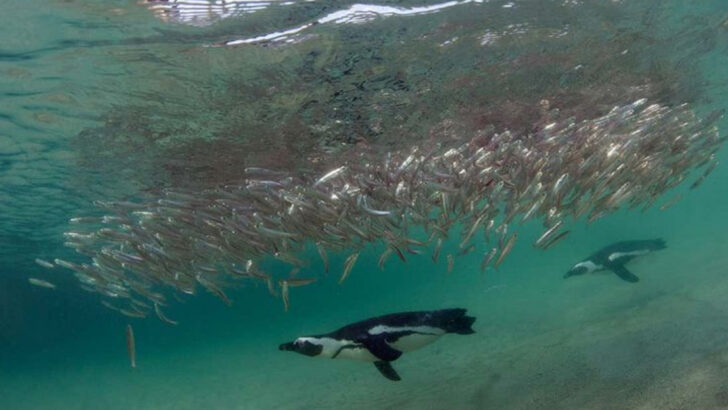The deadliest hunters on Earth don’t stalk savannas or soar through skies.
They glide, dive, and ambush in silence—underwater.
From the icy grip of the polar seas to the steamy swamps of the tropics, these predators have turned the water into a weapon.
They strike without warning. They disappear just as fast.
And you? You never see them coming.
This isn’t just about sharks and crocodiles.
We’re talking snakes that swim like torpedoes.
Frogs that lure prey with fake worms.
Even insects that can drown a fish.
If you thought dry land was dangerous, wait until you meet the creatures who’ve mastered the depths.
These 18 animals have transformed ponds, oceans, rivers—and even puddles—into brutal hunting grounds.
Let’s dive in.
Just… watch your toes.
Bottlenose Dolphin
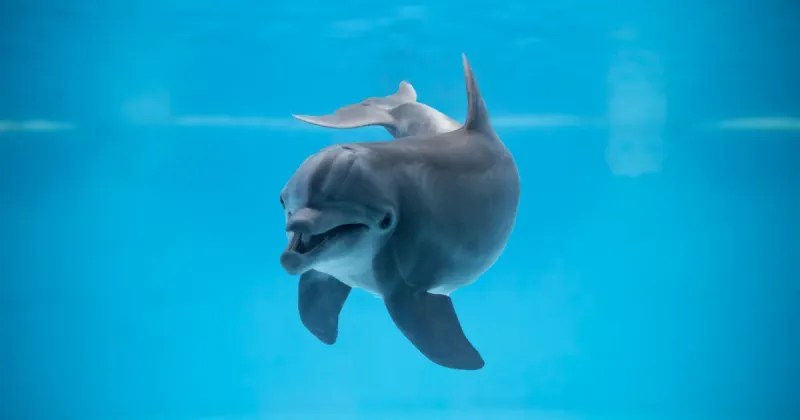
Bottlenose dolphins employ echolocation, a sophisticated sonar system, to locate prey underwater. Using clicks and whistles, they map their surroundings and identify fish even in murky waters. Their intelligence allows them to cooperate in groups, creating bait balls to trap fish.
These aquatic mammals have been observed using tools, such as marine sponges, to protect their snouts while foraging. This behavior highlights their problem-solving abilities.
Their playful nature often masks their strategic prowess, turning the sea into a playground where each member plays a crucial role in the group’s success.
Great White Shark

The great white shark, an apex predator, dominates the ocean with its sheer size and power. Known for breaching the water’s surface, this predator ambushes seals with lightning speed. Its keen sense of smell detects blood from miles away, making it a feared hunter.
Their reputation as solitary hunters is complemented by their strategic patience, often stalking prey from below. This method allows them to surprise their targets effectively.
Despite their fearsome image, great whites play an essential role in marine ecosystems, maintaining balance by controlling seal and other marine populations.
Electric Eel
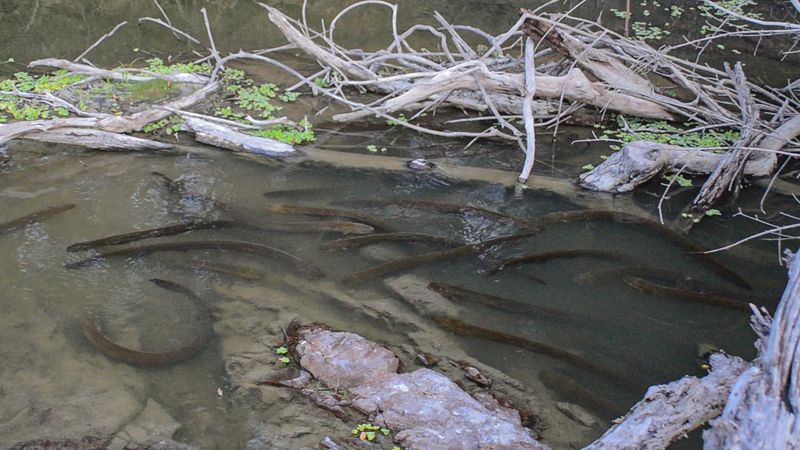
The electric eel, despite its name, is more closely related to catfish. It inhabits the murky waters of the Amazon and Orinoco rivers. Using its electric organs, this eel delivers powerful shocks, stunning fish and smaller creatures.
Its ability to generate electricity not only aids in hunting but also in navigation and communication within its environment. This unique feature sets it apart among aquatic hunters.
The eel’s serpentine body allows it to maneuver through dense vegetation, making it an efficient predator in its riverine habitat.
Crocodile

Crocodiles are stealthy predators, often lurking just beneath the water’s surface, waiting for unsuspecting prey. Their eyes and nostrils positioned on top of their heads allow them to remain nearly invisible.
They employ a sudden burst of speed to capture birds and mammals that come to the water’s edge. This ambush technique is their primary hunting strategy.
Their powerful jaws and death roll maneuver make them formidable hunters. These ancient reptiles are a testament to evolutionary success in aquatic hunting.
Orca

Orcas, or killer whales, are intelligent hunters that use teamwork to capture prey. In icy waters, they create waves to knock seals off ice floes. This cooperative strategy highlights their social structure and communication skills.
These apex predators also hunt larger marine mammals, using complex strategies to outwit their targets. Their versatility in hunting techniques is a testament to their intelligence.
Despite their name, orcas are part of the dolphin family, and their black-and-white coloring makes them one of the most recognizable marine animals.
Piranha

Piranhas, often feared for their sharp teeth and aggressive feeding frenzies, inhabit the freshwater rivers of South America. They hunt in schools, quickly stripping prey to the bone with their razor-sharp teeth.
Their hunting strategy relies on overwhelming their target with sheer numbers and speed. Despite their fearsome reputation, piranhas are primarily scavengers, playing a crucial role in their ecosystem.
These fish communicate through various sounds, adding another layer to their hunting prowess. Their efficiency in water is unmatched, making them iconic river predators.
Sea Otter
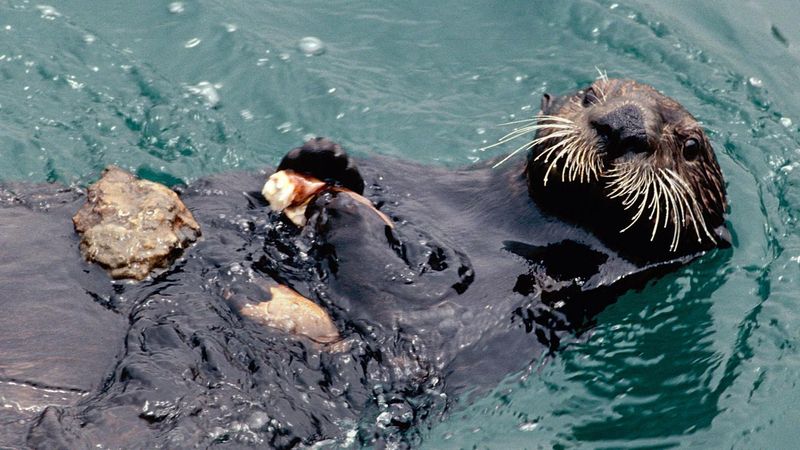
Sea otters, known for their endearing appearance, are adept hunters of sea urchins, crabs, and mollusks. They use rocks as tools to crack open hard shells, showcasing their intelligence and dexterity.
Floating on their backs, they create a small ‘table’ with their chest to prepare their meals. This behavior not only displays their adaptability but also their playful nature.
Their role as keystone predators helps control sea urchin populations, preventing the overgrazing of kelp forests. This balance is vital for maintaining healthy marine ecosystems.
Penguin
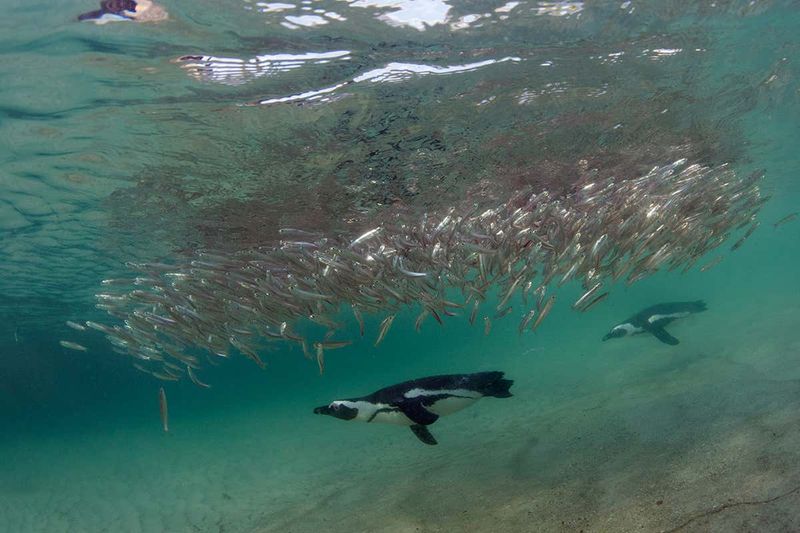
Penguins are expert swimmers, using their streamlined bodies to glide through water with ease. They hunt fish and squid in the frigid waters of the Southern Hemisphere.
Their flippers act like powerful paddles, propelling them at high speeds to catch slippery prey. Penguins’ hunting strategy often involves diving deep and for long durations.
These birds’ agility in water contrasts with their waddling gait on land. Penguins’ ability to thrive in extreme environments makes them fascinating aquatic hunters.
Sea Snake

Sea snakes, with their hydrodynamic bodies, are venomous hunters that thrive in warm ocean waters. They search for fish and eels among coral reefs, using their potent venom to immobilize prey.
Their ability to hold their breath for extended periods allows them to dive deep and explore vast underwater landscapes. This adaptation makes them efficient predators in their environment.
These snakes are generally non-aggressive towards humans, but their striking appearance and unique hunting methods make them intriguing subjects of study.
Giant Squid
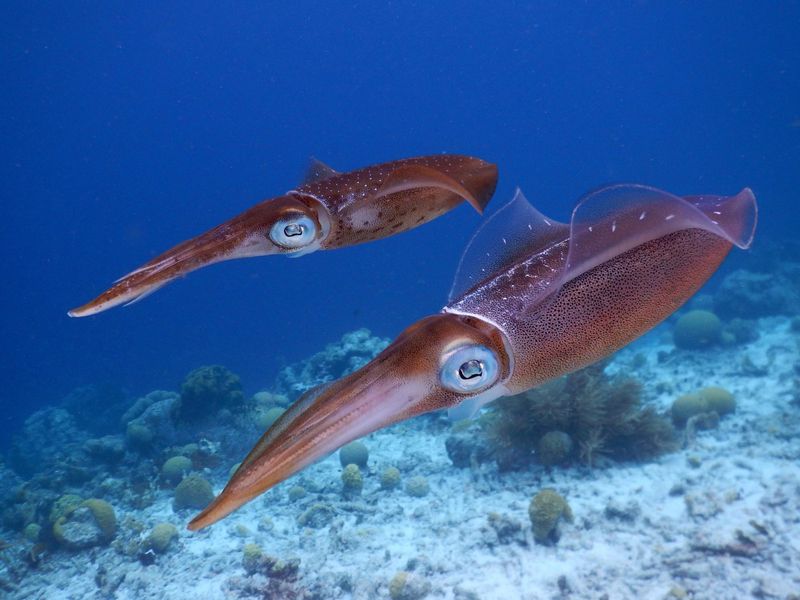
Giant squids, elusive and mysterious, inhabit the deep ocean where sunlight barely penetrates. Their long tentacles equipped with suction cups allow them to grasp prey firmly.
These cephalopods rely on stealth and surprise, emerging from the depths to snatch fish and other marine creatures. Their large eyes help detect faint light and motion in dark waters.
Encounters with giant squids are rare, adding to their enigmatic allure. Their role as deep-sea hunters continues to captivate the imagination of scientists and ocean enthusiasts alike.
Blue Heron
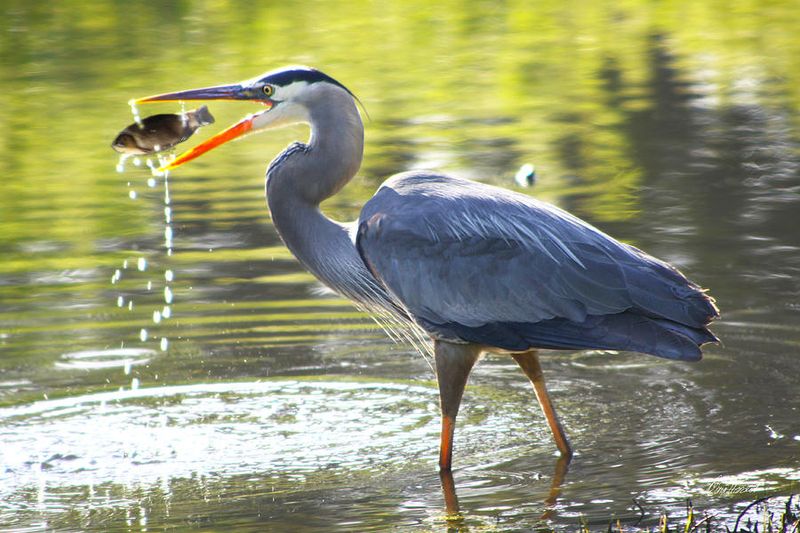
The blue heron, with its elegant stature, is a master of patience. Standing motionless in shallow waters, it waits for the perfect moment to strike and capture fish with its spear-like beak.
Their slow, deliberate movements reduce water disturbance, making them effective ambush predators. This technique requires minimal energy, showcasing nature’s efficiency.
Beyond hunting, blue herons are symbols of tranquility in many cultures, often found near lakes and wetlands, their presence a testament to the balance between predator and prey.
Pelican
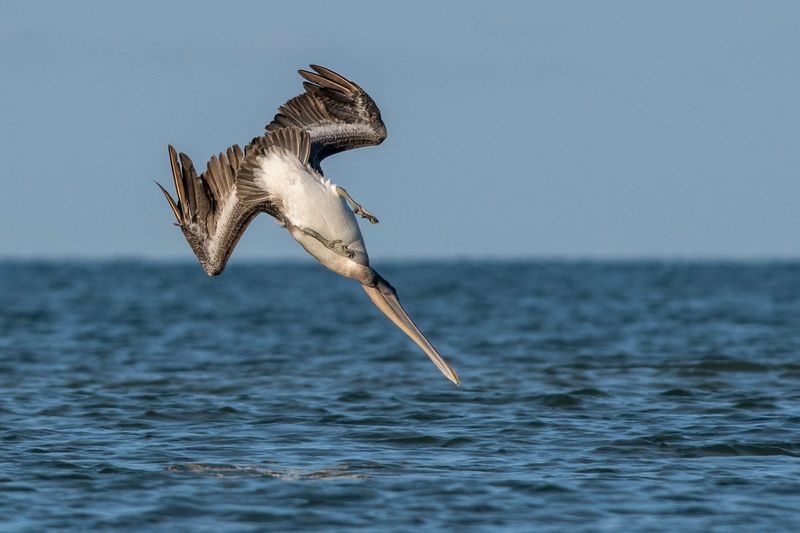
Pelicans, recognized by their large beaks, exhibit a unique hunting technique. They dive from the air, plunging into water to scoop up fish in their expandable throat pouches.
This breathtaking spectacle is both a display of precision and adaptability. After capturing their meal, they drain water from their pouches before swallowing their catch.
Their communal living often leads to cooperative hunting, where groups of pelicans drive fish towards shallow waters. Pelicans’ hunting strategy highlights the diverse methods animals use to thrive in aquatic environments.
River Otter
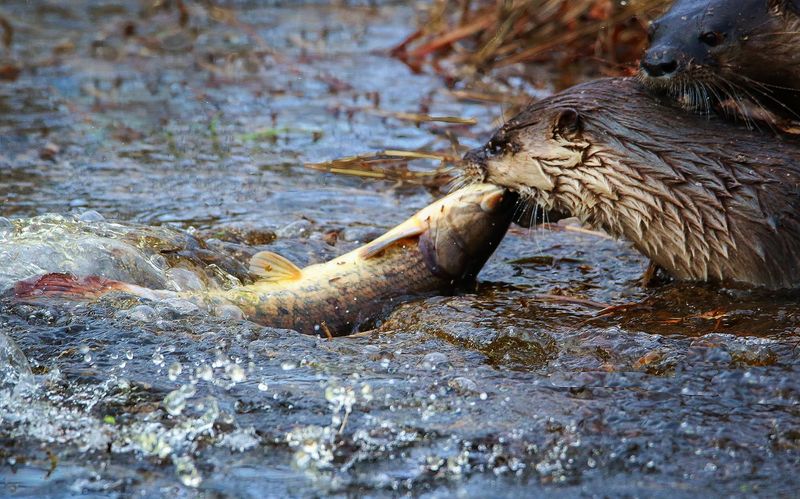
River otters, with their sleek bodies, are agile hunters in freshwater ecosystems. They chase after fish, frogs, and crustaceans, often hunting in family groups.
Known for their playful behavior, they exhibit incredible agility, twisting and turning in pursuit of prey. Their hunting success is a blend of speed and strategy.
As indicators of healthy waterways, river otters’ presence signifies vibrant ecosystems. Their playful antics and effective hunting make them beloved figures in aquatic habitats.
Spoonbill
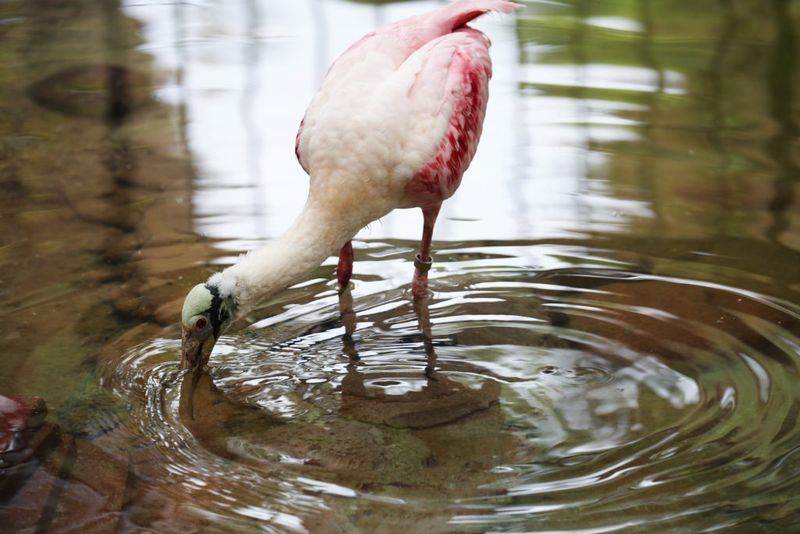
Spoonbills, with their distinctive flat bills, are adept at sifting through mud and water to find small fish and crustaceans. They sweep their bills side to side, feeling for prey in shallow waters.
This tactile hunting method highlights their specialization in aquatic habitats. Their vibrant plumage adds a splash of color to wetlands and estuaries.
Despite their unique appearance, spoonbills are efficient hunters, relying on touch rather than sight. Their presence contributes to the biodiversity of their ecosystems, playing a vital role in the food web.
Cormorant
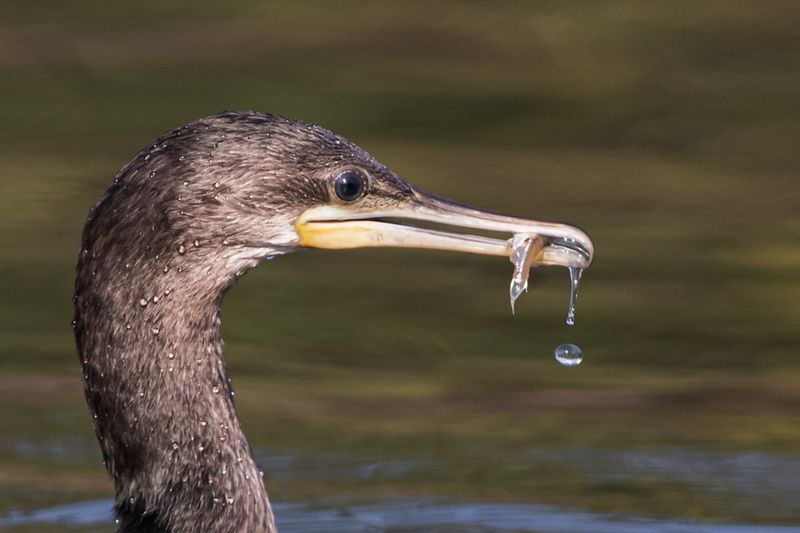
Cormorants, skilled divers, hunt by chasing fish underwater. Their webbed feet propel them swiftly, while their streamlined bodies reduce drag.
These birds often hunt in groups, herding fish into tight formations to increase capture success. After diving, they spread their wings to dry, a distinctive behavior.
Their adaptability to different aquatic environments makes them widespread across the globe. Cormorants’ hunting acumen and communal strategies underscore their role as efficient aquatic predators.
Alligator

Alligators, ancient reptiles, use their stealth to ambush prey near water bodies. With eyes and nostrils above water, they remain inconspicuous while surveying their surroundings.
Their sudden lunges and strong jaws capture birds and mammals at the water’s edge. This method of hunting is both efficient and effective.
In ecosystems like swamps and marshes, alligators maintain balance by controlling other animal populations. Their presence is vital for the health of these habitats, ensuring biodiversity.
Mudskipper
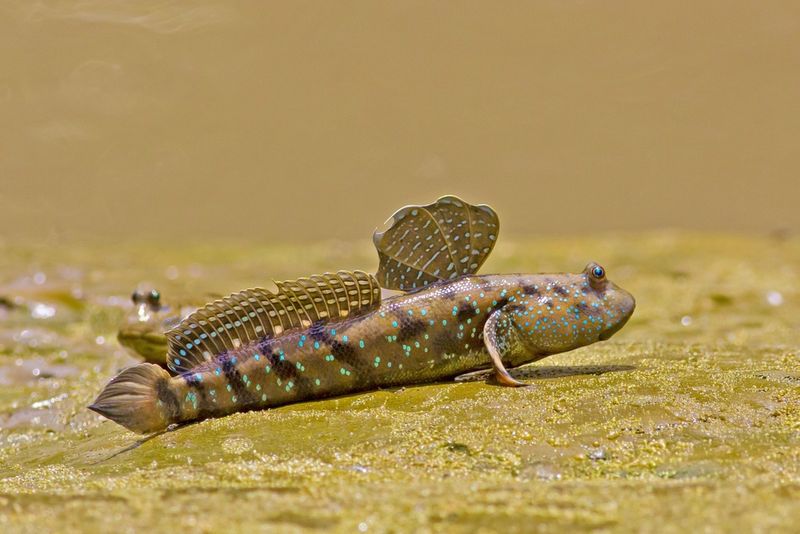
Mudskippers, fish that thrive both in water and on land, are unique hunters. They use their pectoral fins to move across mudflats, catching insects and small crustaceans.
Their adaptability to different environments showcases evolutionary innovation. While hunting, they remain vigilant, swiftly retreating to water if threatened.
Mudskippers’ ability to breathe through their skin and gills allows them to exploit coastal areas effectively. Their dual existence blurs the line between aquatic and terrestrial life, setting them apart as versatile hunters.
Octopus
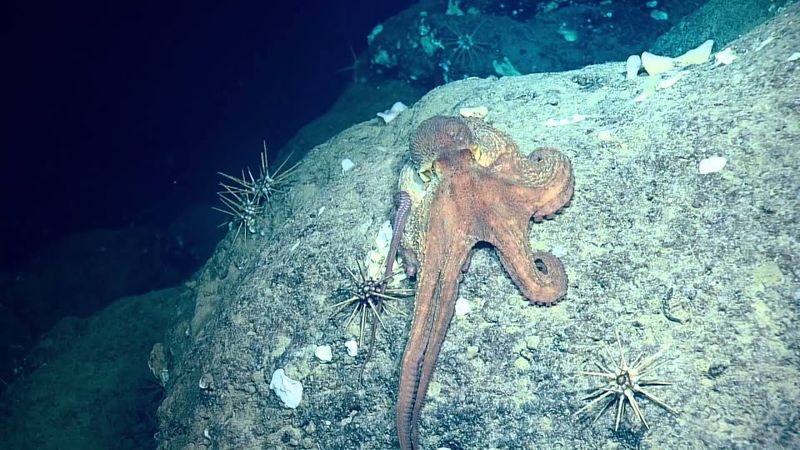
Octopuses, masters of disguise, use their intelligence and flexible bodies to hunt. Camouflaging among rocks and coral, they ambush unsuspecting prey with their long tentacles.
Their ability to squeeze through tiny crevices helps them surprise crustaceans and fish. This adaptability makes them formidable hunters in diverse marine environments.
Beyond their hunting prowess, octopuses are known for problem-solving abilities and curiosity. Their enigmatic nature continues to fascinate marine biologists and ocean enthusiasts alike.

